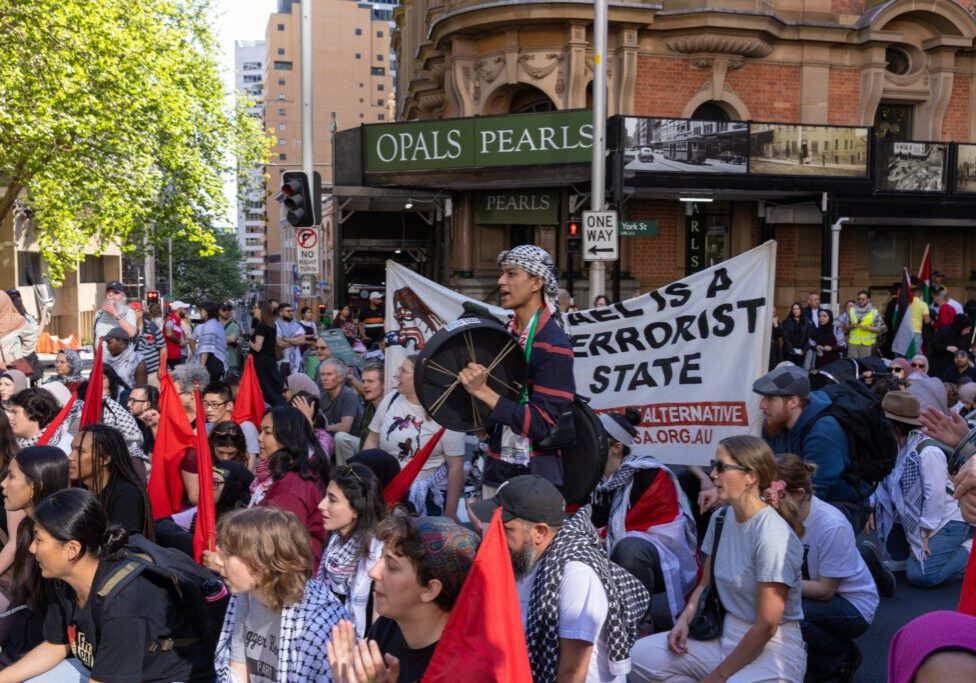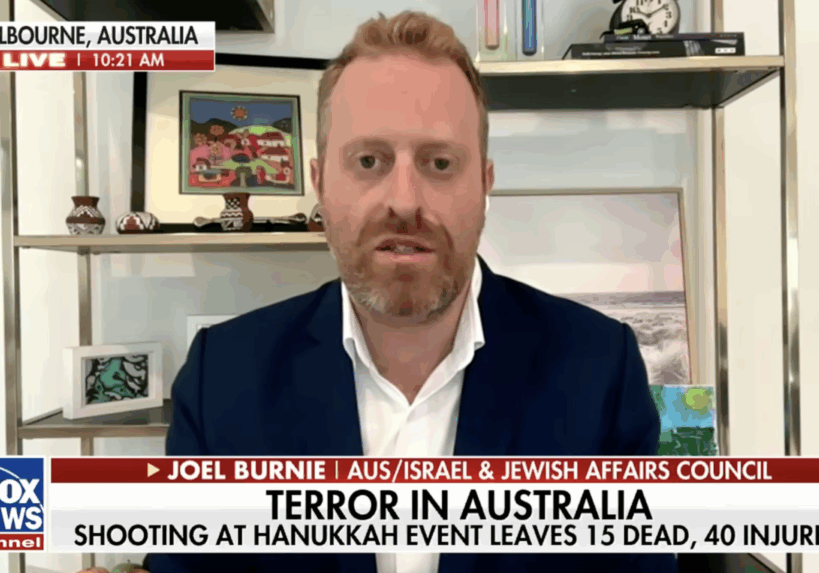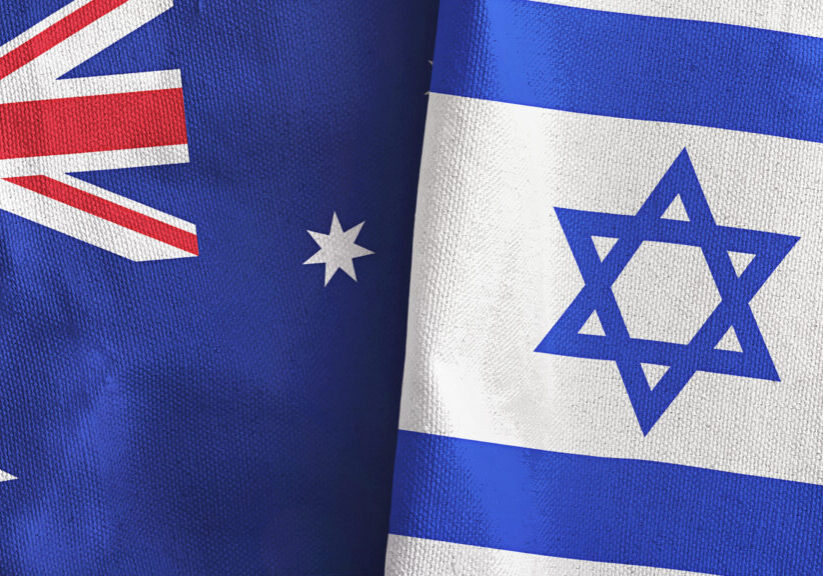Australia/Israel Review
State of War
Nov 27, 2023 | Amotz Asa-El

Israel’s profound changes since October 7
“This war’s impact will be more profound than the Yom Kippur War’s effect,” said Maj-Gen (res) Gershon Hacohen.
A fellow at the Begin-Sadat Centre and a former commander of Israel’s military colleges, the 67-year-old Hacohen has earned a reputation as one of the most original thinkers the IDF has produced. His initial impressions of what Israel sustained during the Black Saturday Massacre of October 7 and its aftermath are thus meaningful.
As the fighting in Gaza entered its second month, the retired general’s early impressions were shared by practically every pundit in Israel.
The comparison to the Yom Kippur War begs to be made, not only because of the recent massacre’s date – 50 years and one day since the 1973 war – and not only because both wars were timed to overlap with Jewish holidays, but also because the current war is, like 1973, shaking Israeli society to its foundation.
The current war is still young. No one can guess how long it will last – some military experts expect as long as a year – or how wide it will spread. At this writing, the daily skirmishes along the Lebanese border with Hezbollah and allied groups already amount to a war of attrition, which can slide into full-scale war at any moment.
A series of missiles fired by Yemen’s Iranian-backed Houthis raises the prospect of an even wider war. In addition, chances are that the fighting will sooner or later, one way or another, reach the paymaster, armer and trainer of Hamas, Hezbollah and the Houthis – Iran itself.
Still, some things can already be said about the unfolding war, and their implications are indeed profound – militarily, politically and regionally.
Militarily, the surprise Israel sustained was comprehensive. Unlike the Yom Kippur War’s surprise, which was mostly about misreading the enemy’s intentions, this one was about the enemy’s capabilities as well. No one knew, or even imagined, Hamas could carry out a complex attack deploying thousands of men according to a detailed plan that combined motorised paragliders, drones, boats, bulldozers, mass rocket and mortar fire and detailed intelligence.
In addition, the number of casualties Israel sustained on October 7 alone was almost half of what Israel sustained during the whole of the Yom Kippur War’s 19 days. In fact, that day’s fatalities are more than the Zionist enterprise has suffered on any single day since modern Jewish settlement began in then-Turkish-controlled Palestine more than 140 years ago. Worse, most of the massacre’s casualties were civilians, whereas the 1973 losses were all soldiers.
The answer to the main technical question all this raises – where was the IDF when the massacre began? – is today clear: it took the IDF several hours to piece together the full picture of an assault for which it had never prepared, and another few hours to fully deploy the kind of force that the situation demanded.
In the strictly military sense, the Hamas plan of attack was foiled – it did not achieve its planners’ goals, which were to penetrate much further into Israeli territory and hold on to several towns for weeks, while possibly linking up with the West Bank. By the evening of October 7,, more than 1,000 of the attackers had been killed, and, except for a few lingerers killed over the next few days, the rest were chased back into the Gaza Strip.
Also on the plus side, the flaws in the IDF’s defensive thinking before October 7 have been offset by its offensive performance since then. The IDF counterattack has revealed well-prepared troops, well-maintained materiel and high-quality tactical coordination as well as an original stratagem – allowing troops to arrive by surprise at the enemy’s nerve centre in Gaza City, after successfully removing most of the civilian population in which that headquarters was deliberately encased.
Even so, the defensive failure of October 7 is widely agreed to be the worst day in Israeli history in general, and the IDF’s annals in particular.
Though its impact on the IDF will take years to assess, several military conclusions already emerge from this debacle, besides the immediate imperative – from Israel’s viewpoint – to eradicate Hamas as a military force.
The first conclusion is that Israel’s intelligence services – along with all their Western equivalents – were wrong to assume that a large-scale military attack can only be waged by a conventional army. It turns out that such an attack can be launched by several thousand people with nothing resembling tanks, jets or helicopter gunships.
This misconception partially explains why Israel failed to permanently station the kind of substantial battle-ready military units along the Gazan border that could have intercepted the invasion at its outset. Clearly, the invasion’s planners were aware of this absence, which was a prerequisite for their plan’s success.
The second conclusion is that Israel’s defensive stance opposite Gaza suffered from an overreliance on technology.
Israel’s military planners were lulled into a false sense of security by the utility of cameras, drones, sensors, cyber warfare and underground detectors along the tall border fence. These planners thought their task was to detect the infiltration, at most, of a few small squads of terrorists, and to have a few platoons and helicopter gunships ready to greet them on short notice.
The third military conclusion stems from the first two, and it is that the IDF will have to reverse its previous doctrinal downgrade of numbers of military personnel as a measure of military strength. Men’s military service will likely return to its original length of three years, after having been trimmed to 32 months; military spending will rise; deployments along the borders will grow, and combat training will change to reflect the new type of threat Israel has suddenly discovered it faces.
Drastic though these conclusions are, they will pale in comparison with the massacre’s impact on Israel’s political governance and Israeli society’s very definition of leadership.

Defence Minister Gallant, PM Netanyahu and IDF Chief of Staff Halevi – there is strong pressure for all three to step down once the current war ends (Image: GPO/ Flickr)
The defensive failure of October 7 has already led to the Chief of Staff, Lt.-Gen. Herzi Halevi, publicly apologising and assuming personal responsibility. Similar statements were made by the head of the Shin Bet security service, Ronen Bar, and by the head of military intelligence, Maj.-Gen. Aharon Haliva. All three are believed to have already decided to resign once the fighting subsides. The same applies to the head of the IDF’s southern command, Maj.-Gen. Yaron Finkelman.
Though these resignations may take a year to arrive, they will collectively create an expectation for a similar dynamic among the politicians, beginning with Prime Minister Binyamin Netanyahu. However, Netanyahu and the rest of the leaders of his Likud party have yet to publicly assume responsibility.
In several TV appearances, Netanyahu has denied having adopted a policy of cultivating Hamas as a counterweight to the Palestinian Authority, as many critics are now charging, citing his systematic approvals of money transfers to Hamas-controlled Gaza from Qatar.
Moreover, Netanyahu appeared to try to blame the army and Shin Bet for having failed to warn him of the impending attack. The accusation, made by the prime minister in a late-night tweet, stirred a public outcry and Netanyahu soon removed the tweet and apologised for having made it.
In an even more provocative tweet, Netanyahu said that after the fighting ends there should be an investigation of the relationship between Hamas’ decision to attack and the intense pre-war controversy over his Government’s judicial reform proposals, including specifically the threat by several dozen IDF reserve pilots, among others, to suspend attending voluntary training duty in protest over the proposals.
Analysts conclude from all this that Netanyahu may seek to shift the blame onto others and cling to office, even though polls suggest a clear majority of the Israeli public wants him to be replaced. If elections were held now, the Likud and its conservative and ultra-Orthodox coalition partners stand to plunge from their current 64 Knesset seats to 43, according to polls. Meanwhile, 52% of voters say they want National Union leader Benny Gantz to replace Netanyahu – who is backed by only 26% of those polled – according to a survey by the Israeli newspaper Maariv published on Nov. 10.
Even if Netanyahu volunteers to clear the stage, but certainly if he does not, a critical mass of mainstream Israelis will almost certainly demand the emergence of new political leaders who will rebuild the western Negev communities severely damaged on October 7, while also displaying the political humility that most feel Netanyahu does not possess, and cultivating the sense of social solidarity he did not inspire.
Whatever its new shape, Israel’s political arena is likely to be profoundly affected by the Black Saturday Massacre in ways even more deep and enduring than the IDF.
It is not at all clear the same can be said about the war’s regional impact.
The most obvious regional conclusion that should emerge from this war is that the Middle East’s major destabilising force is Iran.
While the extent of Teheran’s direct role in the massacre of October 7 remains for now a mystery, it clearly helped finance Hamas, train and equip its troops and inspire the attack. Similarly, the mullahs’ command over Hezbollah in Lebanon and the Houthis in Yemen is unambiguous, and so is Iran’s responsibility for the rocket attacks on Israel from both Lebanon and Yemen that have accompanied Israel’s war with Hamas.
That is why there was concern in Israel that a joint conference of the Arab League and the Organisation of Islamic Cooperation held in Riyadh on Nov. 11 would be used by Iran to damage Israel’s position in the Arab world.
The effort was indeed made, but it yielded no substantive results. Jordan and Bahrain recalled their ambassadors before the conclave convened, but neither they nor any of the other three Arab governments at peace with Israel severed, or even downgraded, diplomatic relations with the Jewish state, despite pressure orchestrated by Iran and its allies to demand they do so.
Saudi Arabia, meanwhile, ignored Iran’s demand that the kingdom cancel its license for Israeli planes to overfly the Arabian Desert. Israel’s growing commercial ties with Morocco and the United Arab Emirates remain intact and seem likely to continue expanding.
While all Arab governments have been attacking Israel’s war in Gaza rhetorically, the reality is that they are split between the American-backed axis led by Cairo and Riyadh, and the anti-American axis that runs from Iran to Yemen through Syria and Iraq, and up to Hezbollah in Lebanon.
Analysts say the governments of the so-called Sunni coalition of moderate Arab states, which shares a fear of religious fanaticism and Iranian imperialism, actually hopes to see Hamas routed and Teheran humbled, even if they dare not say so. The Black Saturday Massacre did little to assuage their fear of Iran. If anything, it may well have intensified it.






